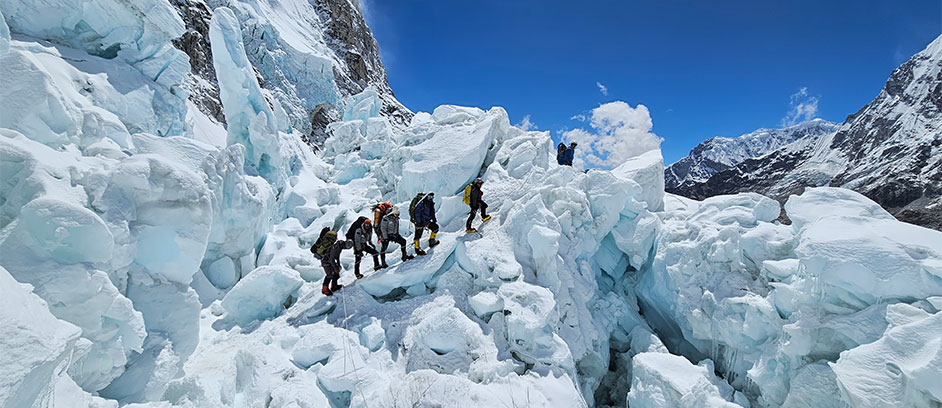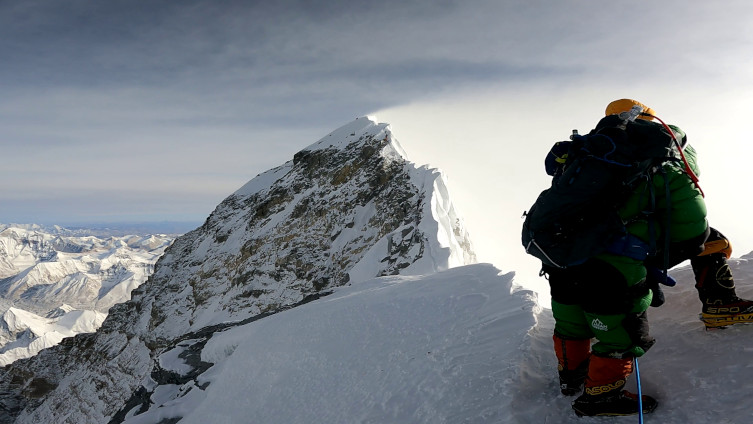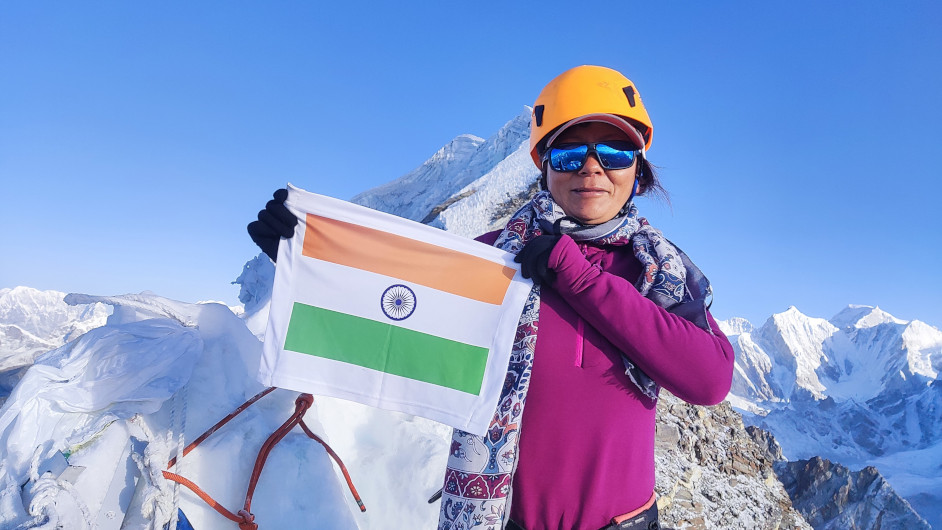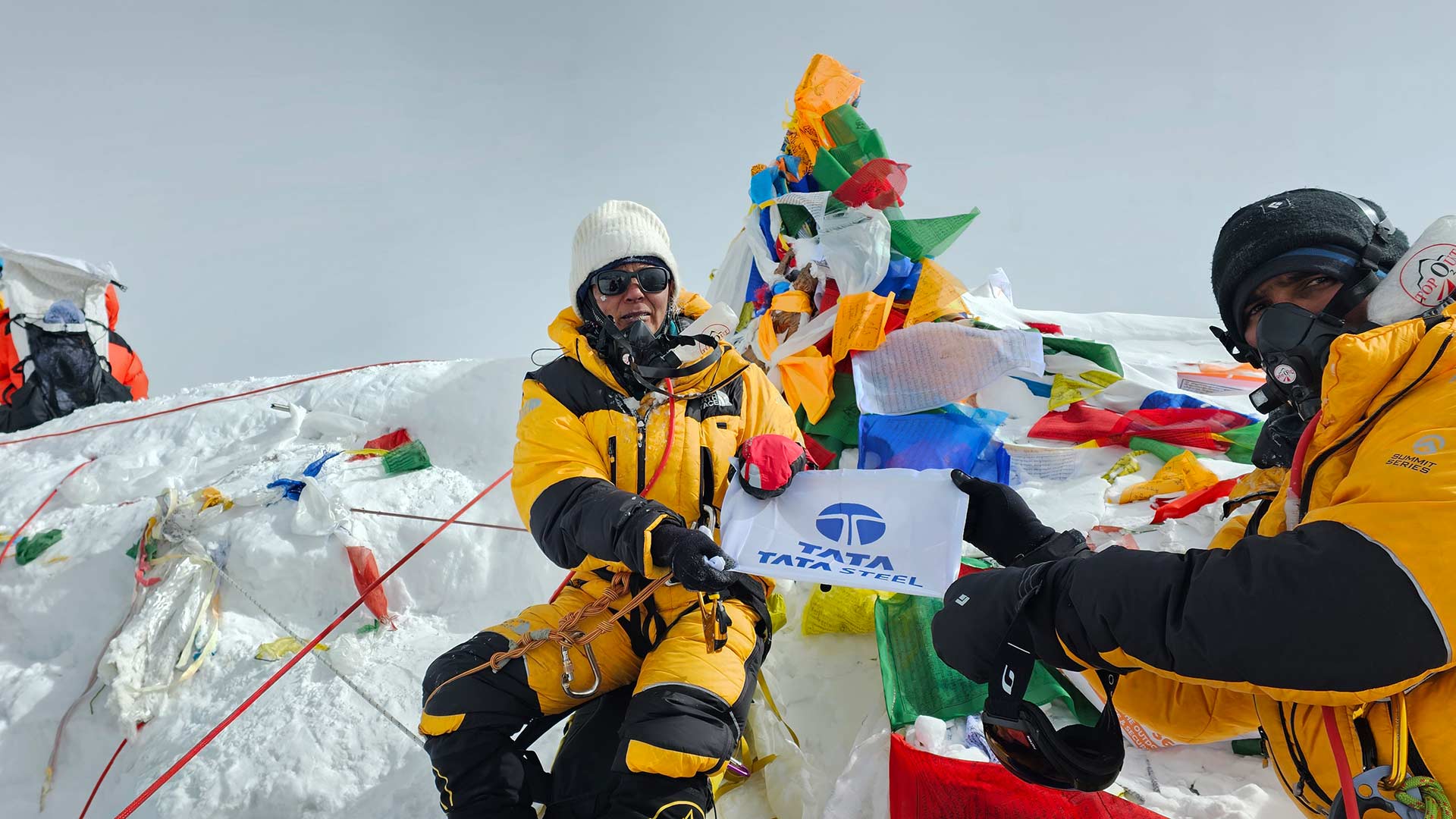February 2024 | 928 words | 4-minute read
Mountaineering is in my genes, says Asmita Dorjee, who scaled Mt Everest in the early hours of May 23, 2023. Her father, Ang Dorjee, was a sherpa who scaled the mountain twice without the use of supplemental oxygen — a rare feat. “Being my father’s daughter, I always dreamt of climbing the world’s tallest peak once,” says Ms Dorjee. In 2020, when she was selected by Tata Steel Adventure Foundation (TSAF) to climb Mt Everest, she set herself a challenging goal — to be the first Indian woman to scale the 8,849m-high peak without oxygen. “I wanted to follow in my father’s footsteps,” she says.
Born in Thamo, a small village in Nepal, Ms Dorjee moved to Jamshedpur in 1989 — with Bachendri Pal, the first Indian woman to scale Mt Everest — after her mother’s death. She had already lost her father in 1984, in an Everest recovery and cleaning mission. Earlier that year, he had accompanied Ms Pal on her historic feat.
Under Ms Pal’s guardianship, Ms Dorjee completed her education and in 1999 pursued an advanced mountaineering course. She joined TSAF in 2001 and is now a senior instructor. Ms Dorjee undertook her first climb in 2002 — Mt Gangotri I (6,672m), in Uttarakhand. And there has been no looking back.

The extensive training
“I put my heart and soul into my training for Everest,” says Ms Dorjee. She followed a strenuous schedule that including running for 20km, cycling, weight training, exercising and power yoga every day in low altitudes. “I climbed Mt Dalma near Jamshedpur with 20kg of weight on my back thrice a week, completing the two-hour trek in 45min. I led three expeditions to Leh, Ladakh. During training in Uttarkashi, I once had to walk at 5am through a jungle that had wild bears. I overcame my fears and completed the five-day trek in six hours.”
As part of her training, she also learnt how to brave loneliness. “I trained alone at Rumtse — 40km from Leh at 4,267m — a place with no network and temperatures around -17°C in winter. I climbed 4,500m to 5,500m every day for almost two months. I took care of my diet and concentrated on building muscles and fat deposits, which would help in high altitudes. I did meditation and yoga to improve my mental strength. When physical strength starts failing, mental strength keeps you going.”

Unstoppable resolve
Ms Dorjee first attempted to scale Mt Everest without oxygen in 2022. However, just 100m from her goal, she had to turn back due to sudden loss of vision. “I was extremely disappointed. However, climbing further would have been life threatening for both for me and my sherpa,” she says. “I told myself that being the first Indian woman to reach Mt Everest’s South Summit at 8,749m, without oxygen was an achievement in itself.”
“To implement the learnings from my mistakes, I scaled Mt Manaslu (8,163m), the eighth highest mountain in the world, without oxygen, in the same year. I was the second Indian woman to do this. It boosted my confidence tremendously.”
The final summit
During her second attempt up Mt Everest in 2023, the extreme weather conditions gave Ms Dorjee a sore throat, making breathing difficult — a severe challenge in a no-oxygen attempt. She had to use supplemental oxygen from Camp 4 onwards (beyond 8,000m), also known as the ‘death zone’. “The chilly winds and continuous snowfall increased the risk of frost bites and life-threatening conditions like hypothermia,” she says. “Climbing without oxygen slows your speed, resulting in low body temperature, permanent brain cell damage and even death. My sherpa, Lakpha Nuru, was my strength during this tough time. After waiting for hours for the situation to improve, we finally left from Camp 4 for the final summit on May 22, 2023, at 10.30pm, in bad weather conditions. Keeping the circumstances in mind, I left my ego behind and took the practical decision of using supplemental oxygen to reach the summit safely. When I reached the South Summit I was extremely emotional as it was where I had lost my father and had to quit last year. But I controlled myself and moved ahead.”

She reached the summit on May 23, 2023, and planted India’s and TSAF’s flag there. “It was an immense feeling of pride. I bowed my head and expressed my gratitude to nature and God for allowing me to reach there,” says Ms Dorjee.
“Every mountaineer dreams of climbing Mt Everest, but not all have the wherewithal. Tata Steel recognised my potential and gave me the opportunity to fulfil my dream,” she says. “There wasn’t just one person behind my success. There was a full team, right from my seniors at TSAF — Chanakya Chaudhary and Hemant Gupta — to my family and the agency that took me there.”
The quest continues
Next on her agenda is a climb up Kanchenjunga, India’s highest and the world’s third highest peak, without supplemental oxygen. As part of her work at TSAF, Ms Dorjee is also planning a training programme for rural youth aged 15-16 and Tata Steel employees belonging to the transgender community. “The aim is to work on their strength and fitness levels and take them to Uttarkashi for training,” she says. “We will start from a height of 3,600m and gradually move to 6,000m and then 8,000m.”
—Arushi Agrawal































